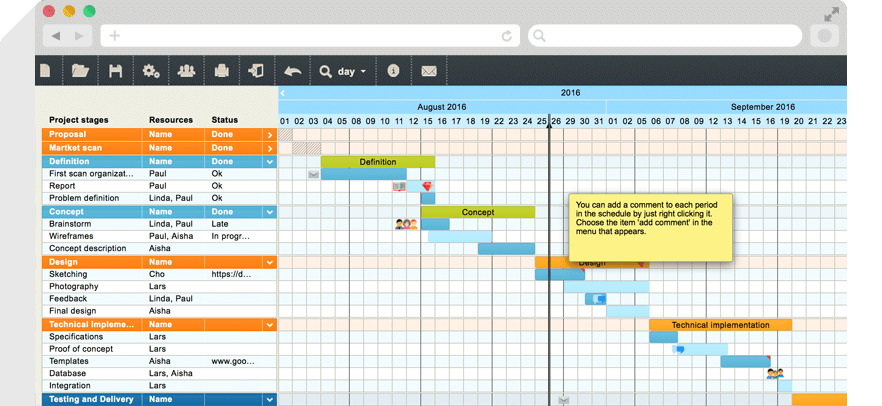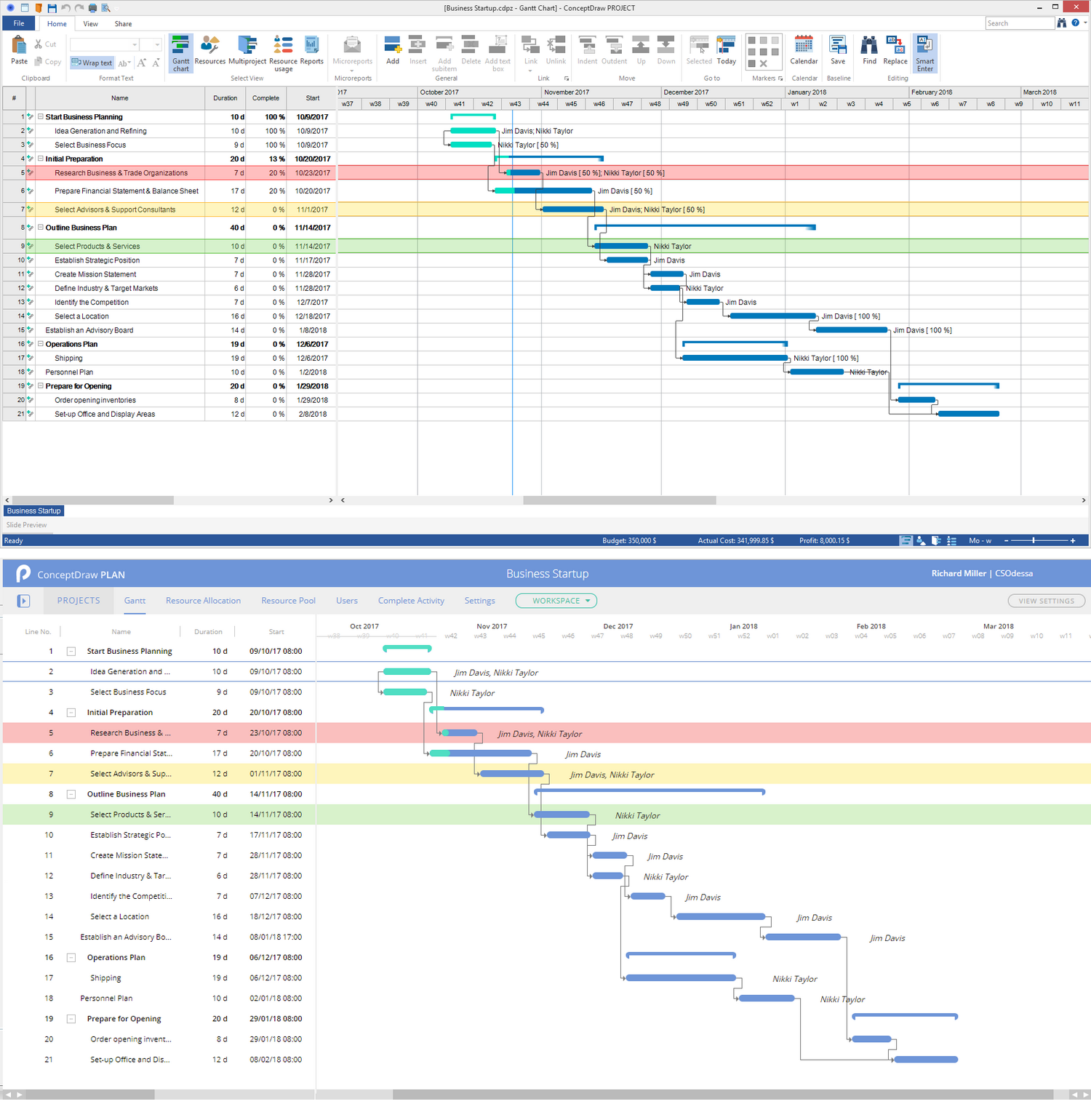

The chart became then widely known in Western countries under Gantt's name. He used the diagram, e.g., to provide a visual representation of the Hoover Dam Project, so that all parties involved could see when each phase of construction was scheduled. Decades later, Henry Gantt designed his version of the diagram. He invented a diagram to display interdependent processes, which he called 'harmonogram'. A brief history of the Gantt ChartĪt the end of the 19th century, the Polish engineer and management researcher Karol Adamiecki aimed to enhance the visibility of production schedules. Vizzlo’s Gantt chart was designed to assist project managers and all other professionals in planning and communicating their work. To help you and your team collaborate efficiently. The Gantt chart keeps the project team and informed from start to finish.

From the position and length of the bar, you can see the start date, duration, and end date of the task. Bars represent tasks as part of an activity. Tasks or events are displayed from top to bottom against time. A Gantt chart shows you what has to be done and when by whom. It is one of the most popular and most effective ways to show a project's timeline. Professionals use Gantt charts to visualize how highly complex tasks can be broken down into smaller processes. A Gantt chart is a timeline of your project. When it comes to managing projects, you need tools to make them manageable. It requires knowledge, and skills on project activities to meet all requirements. A Gantt chart is commonly used in project management.


 0 kommentar(er)
0 kommentar(er)
